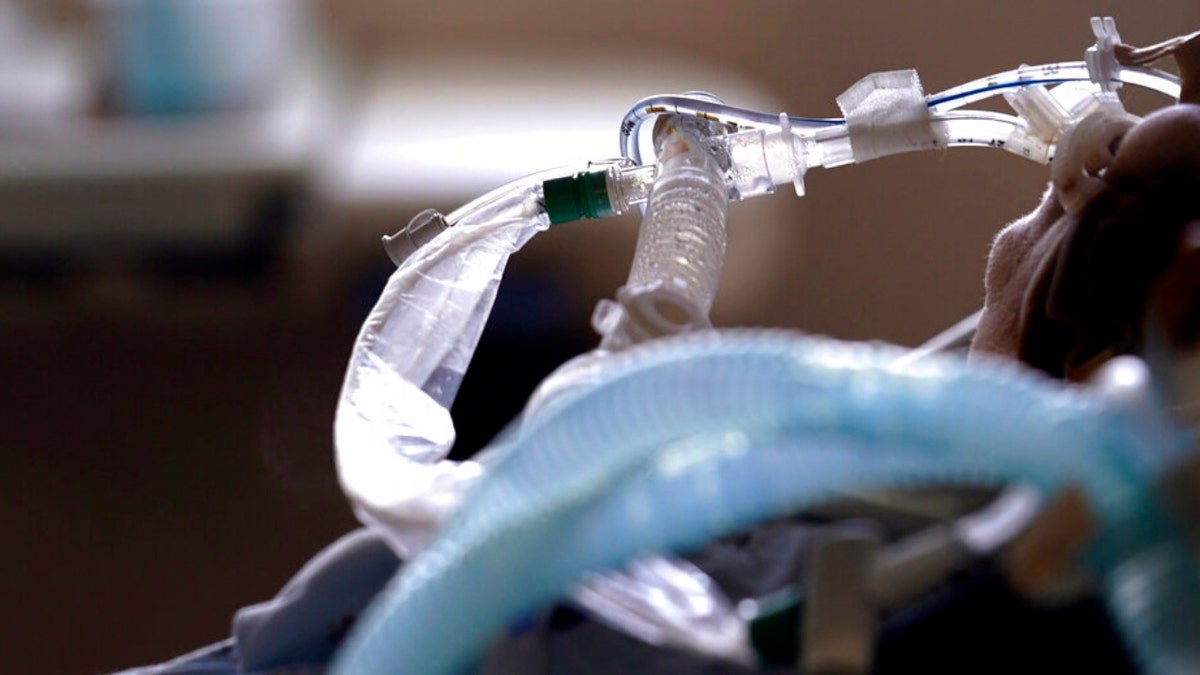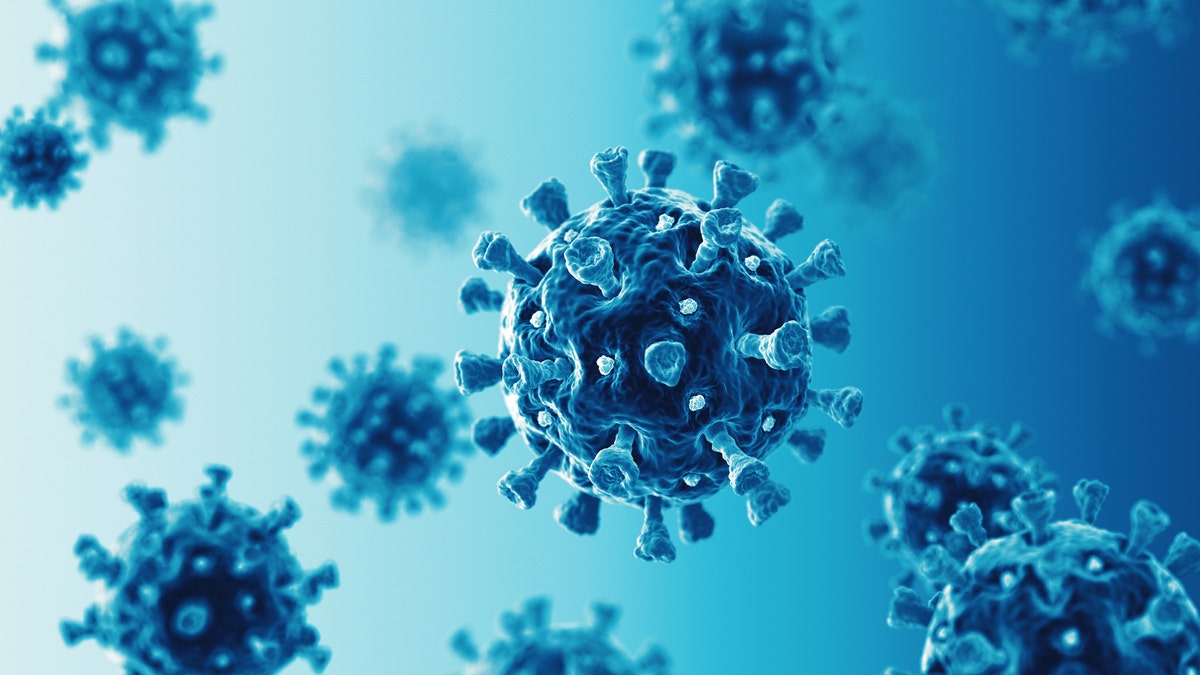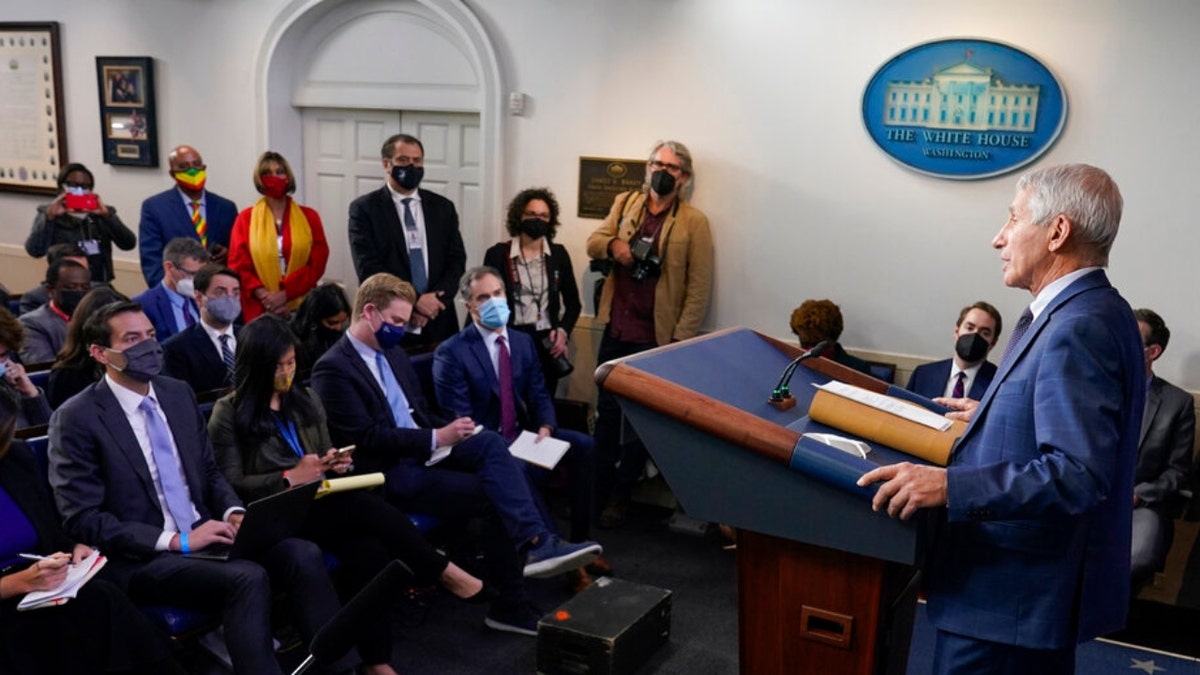Risky gain of function research is mired in secrecy after the coronavirus pandemic
Fox News State Department correspondent Benjamin Hall reports on the murky world of gain of function research after the Wuhan Institute of Virology in China is suspected of starting the pandemic.
Shortly after the coronavirus outbreak, influential leaders in the science community huddled to say the deadly virus most likely originated naturally from an animal transfer to humans.
New reporting from Fox News' "Special Report" showed there was an effort by Dr. Anthony Fauci, director of the National Institute of Allergy and Infectious Diseases, then-National Institutes of Health Director Francis Collins, and other scientists to not mention the possibility of the virus originating in a lab. The consensus was reached on a call in early 2020 that the lab leak theory should be left out of an early paper on COVID-19 origins because it will add "fuel to the conspiracists."
Two years later, there is no definitive proof that the virus started in nature or that it leaked from a lab. But the theory that the virus originated at the Wuhan Institute of Virology, which studies coronaviruses, is no longer shunned as a conspiracy and is gaining more traction among scientific communities calling for further inquiry.
FOX NEWS SPECIAL REPORT OUTLINES FRESH QUESTIONS ON WHAT FAUCI, GOVERNMENT KNEW ABOUT COVID ORIGIN
Fox News talked to several scientists and investigators who have studied COVID-19 origins, and here are some reasons – science-based and circumstantial – why they believe the evidence points to the global pandemic originating from a Wuhan lab, possibly from a researcher accidentally getting infected during an experiment with coronaviruses and spreading it into the community.
"When you evaluate the two theories, it is so overwhelmingly in favor of the lab leak that everything else is just incidental evidence about the details of what happened," said Richard Muller, emeritus professor of physics at the University of California Berkeley, who has been a strong advocate for the lab-leak theory.
Scientists are not in agreement on the origins of the virus, while the U.S. intelligence community also could not draw conclusions on what started the global pandemic that has killed more than 5.7 million people worldwide.

Dr. Anthony Fauci, director of the National Institute of Allergy and Infectious Diseases, speaks during the daily briefing at the White House in Washington, Wednesday, Dec. 1, 2021. (AP Photo/Susan Walsh)
1) No animals have been found to be infected with SARS-CoV-2
Under the natural origin theory, the novel coronavirus, or SARS-CoV-2, would have originated in an animal and traveled to humans either directly or through an intermediate host animal.
This natural spillover has precedent. For example, researchers traced the first Severe Acute Respiratory Syndrome (SARS) outbreak in 2003 back to bat caves in China’s Yunnan province, and the likely intermediary host animals were masked palm civets that tested positive for the virus.
The trouble with drawing the same conclusion for COVID-19 is that no one has identified an animal that has tested positive for the novel coronavirus that caused the global pandemic.
It's not for a lack of trying. Investigators tested more than 80,000 animals in China, including hundreds linked to the Huanan seafood market associated with the early cases of COVID-19, but "no positive result was identified for SARS-CoV-2," the World Health Organization (WHO) study on the origins of COVID-19 says.
"They tested an unprecedented 80,000 animals covering 209 species, including wild, domestic and market animals … and they found no infections in animals," Muller, the professor emeritus, told Fox News Digital.
"They found nothing. But instead of drawing a scientific conclusion from that, the World Health Organization came up with excuses."
The controversial World Health Organization (WHO) study on the origins of COVID-19 says the most likely scenario was a transmission from bats to an unknown host animal to humans, while the lab leak is "extremely unlikely." But even the WHO has backtracked and admitted it was too quick to rule out the lab theory and has revived its investigation.

In this Aug. 31, 2021, file photo, registered nurse Jack Kingsley attends to a COVID-19 patient in the Medical Intensive care unit (MICU) at St. Luke's Boise Medical Center in Boise, Idaho. (AP Photo/Kyle Green, File)
2) No evidence of pre-epidemic infections
During past coronavirus epidemics, such as SARS in 2003 and MERS in 2013, there was evidence of extensive human infection from animals prior to the virus mutating to become transmissible between humans and sparking the pandemic, Muller said.
Investigators tested more than 9,000 human biological samples – including blood, plasma and throat swabs – that were stored at hospitals and blood banks prior to the pandemic, Muller said, citing data from the WHO report.
It was expected that between 100 and 400 would be positive for SARS-CoV-2, based on the natural outbreak experiences with SARS and MERS, Muller said. But in this case, zero tested positive.
"There is no evidence of multiple animal-to-human transmissions," said Dr. Steven Quay, a physician and founder of Atossa Therapeutics.
Muller and Quay have worked together on studying coronavirus origins and have presented their findings to Congress and in a Wall Street Journal op-ed.
The lack of evidence of pre-pandemic infection and genetic purity of the virus suggests COVID-19 wasn’t a natural spillover from animals, but a lab-acquired infection, the scientists say.

There have been more than 900,000 people COVID-19 deaths in the United States. (iStock)
3) The genetic fingerprint of the virus is so unique it has never been observed in a natural coronavirus
Quay, who is writing a book on why COVID-19 originated from a lab, said SARS-CoV-2 has a unique trigger on its surface called a furin cleavage site and a unique code in its genes for that site, called a CGG-CGG dimer. This combination has never been found naturally and therefore points to a lab-manipulated virus, he says.
Since 1992, in gain-of-function research experiments, laboratories have inserted furin sites into viruses repeatedly, Quay said. The end result is supercharged, more infectious viruses, he said.
"These gene jockeys have put in a furin site into a virus that didn't have one in the laboratory," Quay told Fox News Digital. "Eleven out of 11 times it makes it more effective, more transmissible, more lethal -- all the bad things you'd want. So if you want to juice up a virus and make it more infective or make it go from bats to humans, putting in a furin cleavage site is a great idea."
Scientists are not in agreement that the CGG sequences in the furin cleavage site signify the virus was made in a lab. Kristian Andersen, a virologist at the Scripps Research Institute in California, said such arguments are "factually incorrect."
4) The virus appeared in humans already "optimized" into an extremely contagious version
Based on SARS1 and MERS experiences, when the virus becomes capable of human-to-human transmission, it takes weeks to evolve as it spreads through the population and the most contagious forms of the virus dominated. But with COVID-19, the virus was pre-adapted for human-to-human transmission from the first patient, Quay says. Specifically, he said, the part of the virus that interacts with human cells was 99.5% optimized.
"Such early optimization is unprecedented, and it suggests a long period of adaptation that predated its public spread," Quay and Muller wrote in an op-ed in the Wall Street Journal about their findings. "Science knows of only one way that could be achieved: simulated natural evolution, growing the virus on human cells until the optimum is achieved."
NIH ACKNOWLEDGES US FUNDED GAIN-OF-FUNCTION AT WUHAN LAB, DESPITE FAUCI’S DENIALS
Quay believes the COVID-19 virus was taught to infect humans in the laboratory through gain-of-function research on "humanized mice" that are repeatedly exposed to the virus to encourage adaptation.
Other studies refute the idea that the SARS-CoV-2 spike protein was optimized for binding to human ACE2 upon its emergence.

Peter Daszak and Thea Fischer, members of the World Health Organization (WHO) team tasked with investigating the origins of the coronavirus disease (COVID-19), sit in a car arriving at Wuhan Institute of Virology in Wuhan, Hubei province, China, Feb. 3, 2021. (REUTERS/Thomas Peter)
5) The Wuhan Institute of Virology studies bat coronaviruses and has engaged in "gain-of-function" research
The Wuhan Institute of Virology in China studies bat coronaviruses and their potential to infect humans. It has also engaged with so-called "gain of function" experiments, according to the State Department, so it was natural to consider whether a bat-related coronavirus outbreak in Wuhan came from the lab.
"Every informed person, every person in the field of virology, every person in the field of biosafety and biosecurity in January was thinking lab release," Richard Ebright, a professor of chemistry and chemical biology at Rutgers University, told Fox News Digital.
The Wuhan Institute of Virology is one of at most three places in the world that was conducting gain-of-function research and potential pandemic pathogen enhancement research on SARS-related coronaviruses prior to the pandemic, Ebright said. The other two are the University of North Carolina Chapel Hill and University of Texas Medical Branch in Galveston, he said.
Gain-of-function research involves extracting viruses from animals to artificially engineer in a laboratory to make them more transmissible and deadly to humans. The purpose of such research is to allow scientists to get ahead of the curve in developing treatments for certain infectious diseases.
But such research is controversial – and was subject to a U.S. funding moratorium in 2014 under the Obama administration – over concerns the risks of creating more dangerous pathogens outweighed the benefit to prepare for future outbreaks. The federal funding ban was lifted in 2017 with new guidelines.
HOUSE REPUBLICANS PRESS USAID ON $4.7M GRANT FOR ECOHEALTH ALLIANCE AMID COVID QUESTIONS
In one example of research, scientists from the Wuhan Institute of Virology and the University of North Carolina at Chapel Hill teamed up for an experiment that created a hybrid version of a bat coronavirus related to the virus that causes SARS, according to a paper the scientists authored in 2015. The scientists said in 2015 the work was underway before the "gain of function" moratorium began and the U.S. National Institutes of Health (NIH) later determined the research was not so risky as to fall under the ban.
The scientists created a chimeric virus, made up of a surface protein of SHC014 virus found in horseshoe bats in China and the backbone of a SARS virus that had been adapted to grow in mice and to mimic human disease.
Ebright raised alarms about this experiment at the time and the risk of creating a new lab-made outbreak.
So when news of a COVID-19 outbreak in Wuhan broke four years later, Ebright thought of that risky research in Wuhan that was already flagged as a potential pandemic threat.
"This was not merely a possibility," Ebright said of a lab leak. "It had been predicted."

World Health Organization (WHO) Director-General Tedros Adhanom Ghebreyesus gives a press conference on Dec. 20, 2021, at the WHO headquarters in Geneva. (FABRICE COFFRINI/AFP via Getty Images)
6) China has not cooperated and investigators have not had full access to the lab, data
China has insisted the virus did not come from the lab. And Shi Zhengli, who leads the Wuhan Institute of Virology research team on bat coronaviruses, has said the genetic sequence of the new coronavirus does not match any of the viruses her team had sampled from bat caves in China.
But China has stonewalled an independent investigation, failing to provide complete access or independence to investigators, withholding data on the earliest days of the outbreak. The WIV "has not been transparent" about its record of studying viruses most similar to the COVID-19 virus, including "RaTG13," which it sampled from a cave in Yunnan Province in 2013 after several miners died of SARS-like illness, according to the State Department.
The bat virus databases managed by the Wuhan Institute of Virology have went offline, hidden from scrutiny.
Meanwhile, the lab’s U.S. partner, EcoHealth Alliance, has been less than forthcoming about what was going on the Wuhan lab, according to the NIH and congressional investigators. EcoHealth Alliance has received $117 million in U.S. taxpayer dollars, including a $600,000 NIH grant to study the risk of bat coronavirus emergence that was then subgranted to the Wuhan lab, according to a House Republican aide involved in a congressional investigation on COVID-19 origins.
WAPO CALLS FOR ANSWERS ON WUHAN LAB RESEARCH AFTER CALLING PAST QUESTIONS 'FRINGE' THEORIES
Even the Washington Post editorial board in October called for EcoHealth Alliance President Peter Daszak to testify before Congress about the origins of COVID-19, following revelations that, despite repeated denials, the National Institutes of Health did fund so-called "gain of function" coronavirus research in Wuhan through Daszak's nonprofit.
While China isn’t cooperating, investigators believe that the United States already has insight into the research activities at the Wuhan Institute of Virology through grant-making organizations and EcoHealth Alliance records, and argue those documents need to be made public.
7) Lab leaks are not uncommon, so they should not have been dismissed so quickly at the onset of the pandemic
Researchers working on viruses in laboratories have accidentally gotten infected before and caused virus outbreaks in China and elsewhere. For example, in 2004, a lab-leak SARS outbreak in Beijing infected nine people, killing the mother of an infected graduate student who worked at China's National Institute of Virology Laboratory. The lab was conducting research on SARS coronavirus (SARS-CoV).
In Taiwan in 2003, a scientist at the National Defense University in Taipei became infected with severe acute respiratory syndrome (SARS) after studying it in the lab. And a laboratory accident was also to blame for a SARS infection in Singapore in 2003 when a doctoral student at the Singapore General Hospital got sick.
STATE DEPARTMENT LEADERS WERE WARNED NOT TO PURSUE COVID ORIGIN INVESTIGATION: FORMER OFFICIALS
"These viruses are always waiting to infect you," Quay said of lab research. "You only have to make a mistake for five minutes after a 20-year career and, you know, you've got it."
8) Researchers at the Wuhan Institute of Virology were sick just prior to the community outbreak
The State Department revealed in January 2021 that the "U.S. government has reason to believe that several researchers inside the WIV became sick in autumn 2019, before the first identified case of the outbreak, with symptoms consistent with both COVID-19 and common seasonal illnesses."
"This raises questions about the credibility of WIV senior researcher Shi Zhengli’s public claim that there was ‘zero infection’ among the WIV’s staff and students of SARS-CoV-2 or SARS-related viruses," according to the State Department report released in the final days of the Trump Administration.
A U.S. intelligence report revealed by the Wall Street Journal in May went into greater detail. It said that three of the researchers from the Wuhan Institute of Virology were sick enough to seek hospital care in November 2019.

Former U.S. Secretary of State Mike Pompeo speaks at Jerusalem Post's annual conference on Oct. 12, 2021, in Jerusalem. Pompeo's State Department released its findings on the Wuhan Institute of Virology in the final days of the Trump administration. (Amir Levy/Getty Images)
9) The Wuhan Institute of Virology has conducted "secret" research projects with the Chinese military
The U.S State Department revealed on Jan. 15, 2021, that the Wuhan Institute of Virology has collaborated on "secret projects" with China’s military and warned that the country has a history of biological weapons work that Beijing has not "demonstrably eliminated."
"The WIV has engaged in classified research, including laboratory animal experiments, on behalf of the Chinese military since at least 2017," the State Department fact sheet states. "The United States and other donors who funded or collaborated on civilian research at the WIV have a right and obligation to determine whether any of our research funding was diverted to secret Chinese military projects at the WIV."
Quay, who testified during a congressional hearing, said the COVID-19 virus shows strong signs of academic gain-of-function research and "hints" of some never-seen-before features that would be more consistent with "creating a bioweapon."
"You cannot draw a conclusion of that magnitude without knowing the minds of the people," Quay told Fox News. "The difference between academic research and a bioweapon is in the minds of the person in the lab."
Regardless, Quay believes any lab release was not purposeful. "There’s abundant evidence that this was an accident."
10) There was an "orchestrated effort" by NIH officials and others to quickly shut down the lab-leak theory
Those who favor the lab-leak theory have been frustrated by leaders at the National Institutes of Health, including Fauci, who pushed the natural origin theory from the early days of the pandemic and repeatedly denied that the federal agency was funding gain-of-function research at the Wuhan Institute of Virology.
Newly released documents showed that Fauci, the director of the National Institute of Allergy and Infectious Diseases, was warned early on that the virus may have originated in the Wuhan lab. On January 31, 2020, Dr. Kristian Andersen, a noted virologist at the Scripps Lab, privately told Fauci that after discussion with his colleagues some of COVID-19’s features look possibly engineered and the "genome is inconsistent with expectations from evolutionary theory."
In response, Fauci hastily organized a call with dozens of worldwide virologists, and notes from the meeting obtained by Fox News’ "Special Report" reveal that suspicions of the lab leak theory were suppressed over concerns of how the public would react to news of possible Chinese government involvement.
Andersen went on to write a very influential paper with other virologists in Nature Medicine on March 17, 2020, that said just the opposite of his initial concerns about a lab leak. "We do not believe that any type of laboratory-based scenario is plausible," Andersen wrote in a widely cited paper that had the effect of establishing a scientific consensus around the natural origin theory.
Andersen has stood by the natural origin theory and explained to the New York Times that he rejected the lab-leak origin theory after getting more information on the virus. He called the change of heart a "textbook example of the scientific method where a preliminary hypothesis is rejected in favor of a competing hypothesis after more data become available and analyses are completed."

Dr. Anthony Fauci, director of the National Institute of Allergy and Infectious Diseases, speaks during the daily briefing at the White House in Washington, Wednesday, Dec. 1, 2021. (AP Photo/Susan Walsh)
NIH continues to insist that its grant funding to EcoAlliance that was then sub-awarded to the Wuhan Institute of Virology did not meet its definition of "gain of function" research. NIH says the genomic data of the bat coronaviruses studied under the federal grant demonstrates they "are not and could not have become SARS-CoV-2."
However, critics suspect the leading scientists had a professional interest in not provoking backlash over gain-of-function research and inviting further scrutiny into a possibility that a lab in Wuhan that has received funding from the United States could have engaged in manipulating coronaviruses that sparked a pandemic.
"There was an orchestrated effort at the start of 2020 to establish and enforce a false narrative about the origin," Ebright, the Rutgers professor, told Fox News Digital. "Every informed person understood at the start of 2020, that there were two scenarios on the table that both required investigations.
"Those who had been involved in these high-risk research activities, and in particular, those who had funded these high-risk research activities through EcoHealth Alliance in Wuhan sought immediately to clamp down on the discussion and enforce the false narrative that science tells us the virus entered humans [through] natural spillover, and furthermore, that it is the consensus of scientists. Both of those statements were false."
Fox News' Andrew Mark Miller contributed to this report.






























